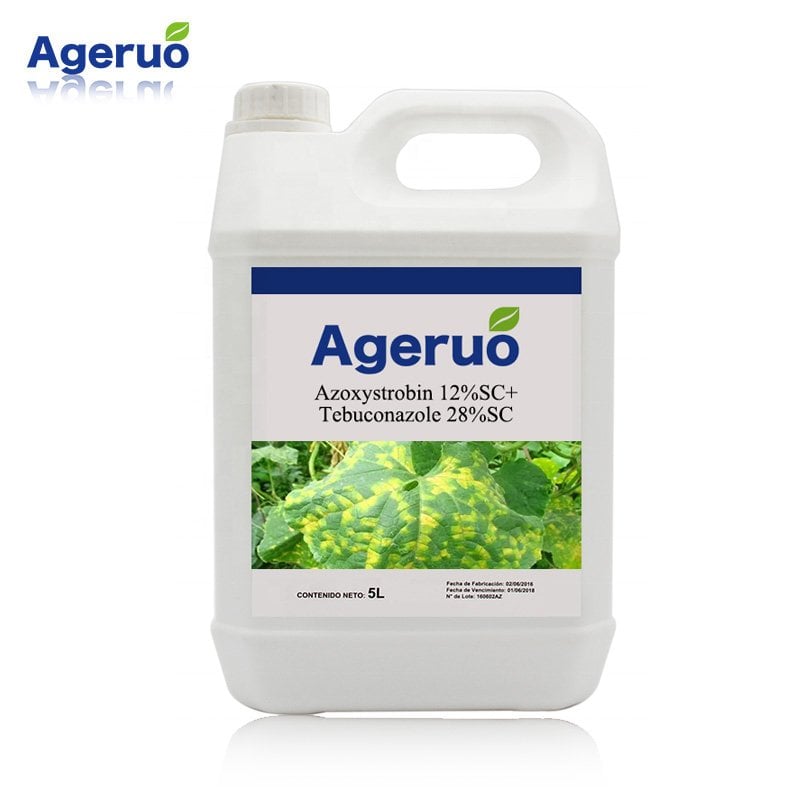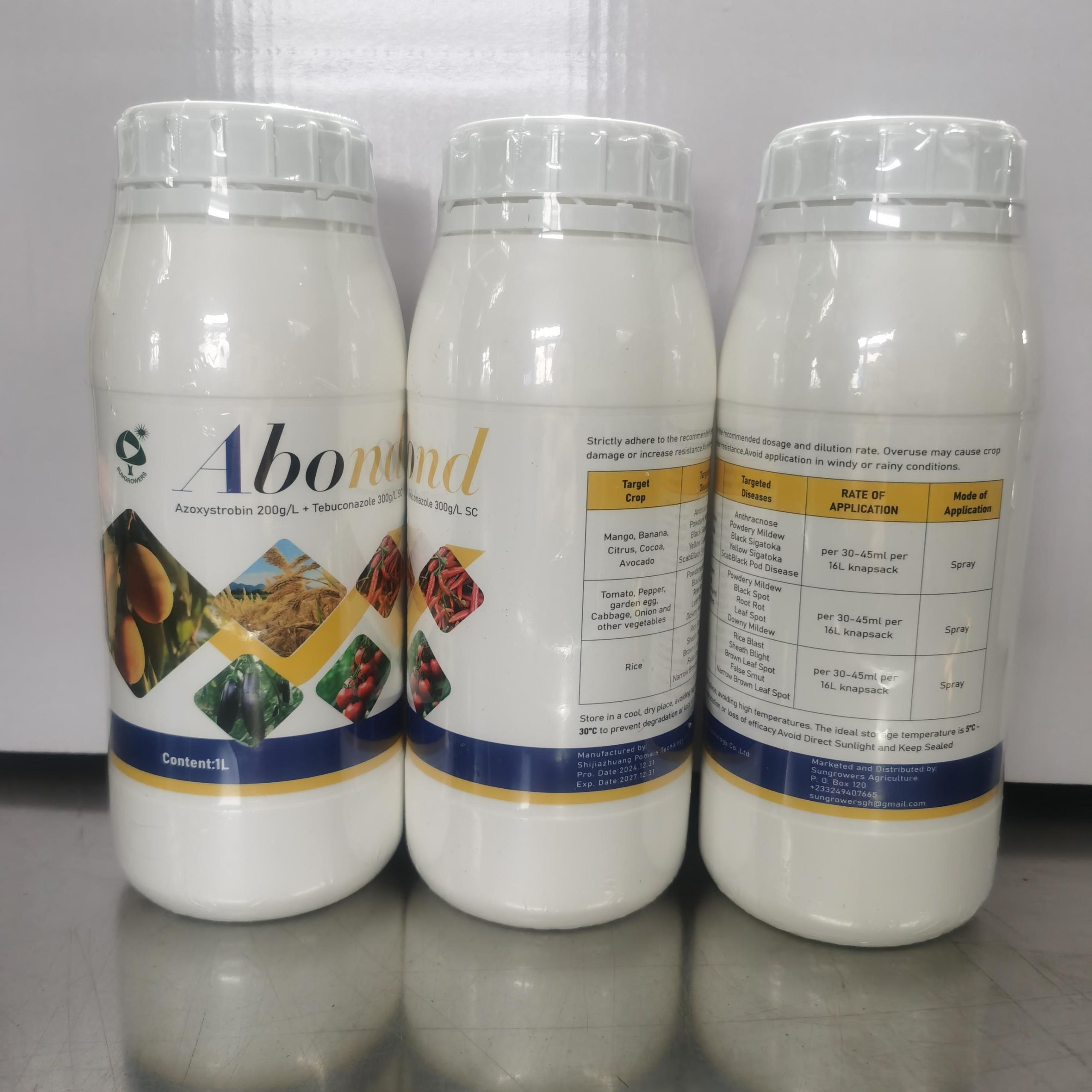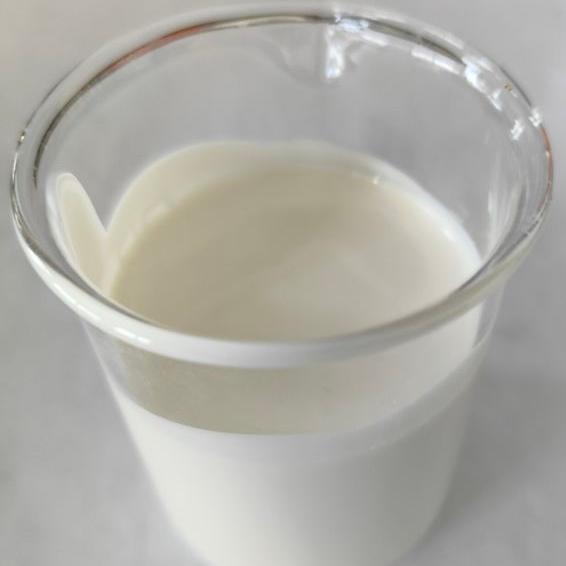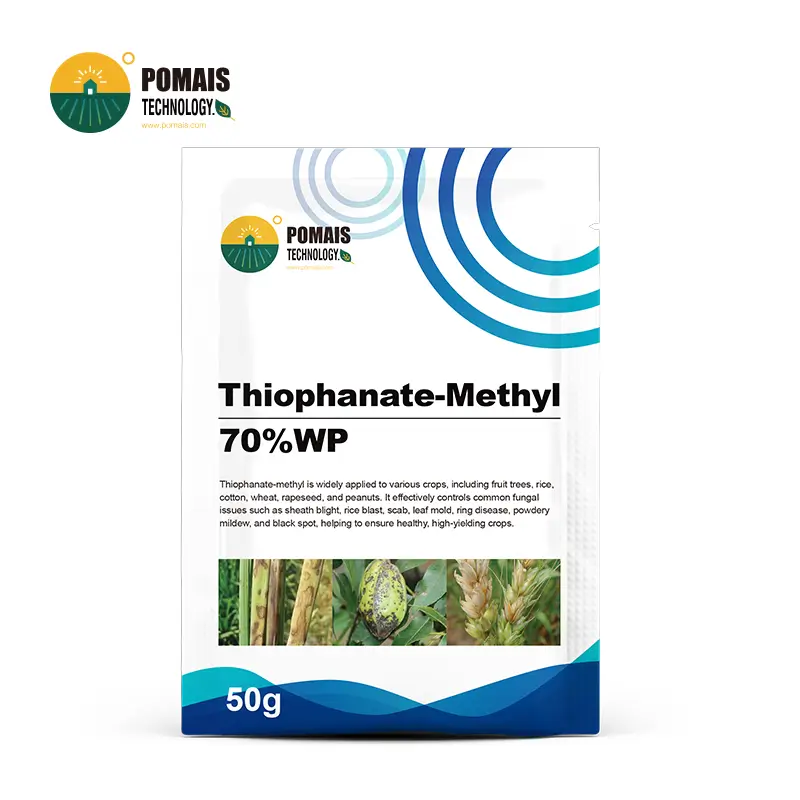Azoxystrobin Fungicide vs Thiophanate-Methyl for Lawns
Which One Offers Better Lawn Disease Protection?
Lawn fungal diseases can severely impact turf aesthetics, growth, and health—especially under humid or stressed conditions. Two of the most commonly used systemic fungicides in turf management are Azoxystrobin and Thiophanate-methyl. Both offer broad-spectrum control, but differ in mode of action, mobility, residual activity, and target pathogens.
In this comparison guide, we break down the core differences between Azoxystrobin vs Thiophanate-methyl for lawn use, to help lawn care professionals, homeowners, and distributors choose the best solution for their turf disease management needs.
1. What Is Azoxystrobin?
Azoxystrobin is a Group 11 fungicide, classified under the strobilurin (QoI) family. It is a broad-spectrum, systemic fungicide used to control a wide range of turfgrass diseases.
- Mode of Action: Inhibits mitochondrial respiration by binding to the Qo site of cytochrome b (blocks energy production in fungi).
- Systemic Behavior: Strongly systemic with translaminar and acropetal movement (moves upward through the xylem).
- Key Turf Diseases Controlled:
- Brown patch
- Dollar spot (partial control)
- Pythium blight
- Rusts
- Leaf spot
- Anthracnose
Azoxystrobin provides preventive control, best used early in the disease cycle or before symptoms appear.
2. What Is Thiophanate-Methyl?
Thiophanate-methyl is a Group 1 fungicide, belonging to the benzimidazole chemical class. It’s a systemic fungicide used for both curative and protective disease management.
- Mode of Action: Disrupts fungal cell division by binding to β-tubulin (mitosis inhibitor).
- Systemic Behavior: Moves upward in the plant, offering internal disease suppression.
- Key Turf Diseases Controlled:
- Dollar spot
- Brown patch
- Gray leaf spot
- Snow mold
- Fusarium patch
Thiophanate-methyl is particularly effective as a curative treatment, often used when disease is already visible.
3. Azoxystrobin vs Thiophanate-Methyl: Key Differences for Lawns
| Feature | Azoxystrobin | Thiophanate-Methyl |
|---|---|---|
| FRAC Code | Group 11 (Strobilurin) | Group 1 (Benzimidazole) |
| Mode of Action | Inhibits mitochondrial respiration | Inhibits fungal mitosis |
| Type | Preventive (strong) | Curative and preventive |
| Spectrum | Broad-spectrum | Broad-spectrum |
| Systemic Action | Translaminar and upward (acropetal) | Primarily upward systemic |
| Rainfastness | High | Moderate |
| Residual Activity | Long-lasting (up to 21–28 days) | Moderate (7–14 days) |
| Resistance Risk | Medium (resistance has developed in some fungi) | High (widespread resistance to benzimidazoles) |
4. Which Is Better for Lawns? Use-Case Recommendations
Choose Azoxystrobin if:
- You want a preventive fungicide to stop diseases before they start.
- You need a long-lasting residual effect to reduce treatment frequency.
- You are managing turf under hot, humid, or high-risk conditions for Pythium, brown patch, or leaf spots.
Choose Thiophanate-Methyl if:
- You need a curative fungicide for active disease outbreaks (e.g., dollar spot or gray leaf spot).
- You want to rotate with a different mode of action in your fungicide program.
- You’re dealing with cool-weather lawn diseases like snow mold.
Best Practice:
Many turf professionals use fungicide rotation or premixes (e.g., Azoxystrobin + Propiconazole, or Thiophanate-methyl + Chlorothalonil) to manage resistance and broaden control.
5. Resistance Management and IPM Considerations
Due to increasing fungicide resistance, especially in Group 1 (benzimidazoles) like Thiophanate-methyl, it’s critical to:
- Rotate with different FRAC groups.
- Apply only when needed, based on disease pressure.
- Combine chemical control with cultural practices like improved drainage, balanced fertilization, and correct mowing.
6. Commercial Formulations and Buying Options
We offer both Azoxystrobin and Thiophanate-methyl in a range of bulk and branded formulations:
Azoxystrobin Products Available:
- 250g/L SC
- 20% WG
- Combo: Azoxystrobin + Difenoconazole, Azoxystrobin + Propiconazole
Thiophanate-Methyl Products Available:
- 70% WP
- 50% SC
- Combo: Thiophanate-methyl + Mancozeb, Thiophanate-methyl + Chlorothalonil
Formulation types: SC, WG, WP
Packaging: 100ml to 5L bottles or custom-labeled packs
Support: COA, MSDS, sample testing, registration assistance
We specialize in OEM/ODM solutions and bulk export for global turf care distributors and lawn product brands.
Conclusion: Azoxystrobin or Thiophanate-Methyl for Lawn Care?
There is no one-size-fits-all answer. Instead, a strategic combination based on disease cycle, lawn type, climate, and application timing gives the best results.
- For early, season-long protection: Choose Azoxystrobin.
- For active infections or curative treatment: Use Thiophanate-methyl.
- For resistance management and broad coverage: Rotate or mix both in your program.
Partner with Us for Lawn Fungicide Supply
We are a reliable supplier of professional turf fungicides, offering:
- Factory-direct pricing
- Custom formulas and packaging
- Fast shipping worldwide
- Free samples for evaluation
- Support for distributors and brand owners
Looking to stock or distribute premium-quality Azoxystrobin or Thiophanate-methyl fungicides for lawns and turf?
Contact our team today for product catalogs, pricing, and formulation customization.
Which One Offers Better Lawn Disease Protection?
Lawn fungal diseases can severely impact turf aesthetics, growth, and health—especially under humid or stressed conditions. Two of the most commonly used systemic fungicides in turf management are Azoxystrobin and Thiophanate-methyl. Both offer broad-spectrum control, but differ in mode of action, mobility, residual activity, and target pathogens.
In this comparison guide, we break down the core differences between Azoxystrobin vs Thiophanate-methyl for lawn use, to help lawn care professionals, homeowners, and distributors choose the best solution for their turf disease management needs.
1. What Is Azoxystrobin?
Azoxystrobin is a Group 11 fungicide, classified under the strobilurin (QoI) family. It is a broad-spectrum, systemic fungicide used to control a wide range of turfgrass diseases.
- Mode of Action: Inhibits mitochondrial respiration by binding to the Qo site of cytochrome b (blocks energy production in fungi).
- Systemic Behavior: Strongly systemic with translaminar and acropetal movement (moves upward through the xylem).
- Key Turf Diseases Controlled:
- Brown patch
- Dollar spot (partial control)
- Pythium blight
- Rusts
- Leaf spot
- Anthracnose
Azoxystrobin provides preventive control, best used early in the disease cycle or before symptoms appear.
2. What Is Thiophanate-Methyl?
Thiophanate-methyl is a Group 1 fungicide, belonging to the benzimidazole chemical class. It’s a systemic fungicide used for both curative and protective disease management.
- Mode of Action: Disrupts fungal cell division by binding to β-tubulin (mitosis inhibitor).
- Systemic Behavior: Moves upward in the plant, offering internal disease suppression.
- Key Turf Diseases Controlled:
- Dollar spot
- Brown patch
- Gray leaf spot
- Snow mold
- Fusarium patch
Thiophanate-methyl is particularly effective as a curative treatment, often used when disease is already visible.
3. Azoxystrobin vs Thiophanate-Methyl: Key Differences for Lawns
| Feature | Azoxystrobin | Thiophanate-Methyl |
|---|---|---|
| FRAC Code | Group 11 (Strobilurin) | Group 1 (Benzimidazole) |
| Mode of Action | Inhibits mitochondrial respiration | Inhibits fungal mitosis |
| Type | Preventive (strong) | Curative and preventive |
| Spectrum | Broad-spectrum | Broad-spectrum |
| Systemic Action | Translaminar and upward (acropetal) | Primarily upward systemic |
| Rainfastness | High | Moderate |
| Residual Activity | Long-lasting (up to 21–28 days) | Moderate (7–14 days) |
| Resistance Risk | Medium (resistance has developed in some fungi) | High (widespread resistance to benzimidazoles) |
4. Which Is Better for Lawns? Use-Case Recommendations
Choose Azoxystrobin if:
- You want a preventive fungicide to stop diseases before they start.
- You need a long-lasting residual effect to reduce treatment frequency.
- You are managing turf under hot, humid, or high-risk conditions for Pythium, brown patch, or leaf spots.
Choose Thiophanate-Methyl if:
- You need a curative fungicide for active disease outbreaks (e.g., dollar spot or gray leaf spot).
- You want to rotate with a different mode of action in your fungicide program.
- You’re dealing with cool-weather lawn diseases like snow mold.
Best Practice:
Many turf professionals use fungicide rotation or premixes (e.g., Azoxystrobin + Propiconazole, or Thiophanate-methyl + Chlorothalonil) to manage resistance and broaden control.
5. Resistance Management and IPM Considerations
Due to increasing fungicide resistance, especially in Group 1 (benzimidazoles) like Thiophanate-methyl, it’s critical to:
- Rotate with different FRAC groups.
- Apply only when needed, based on disease pressure.
- Combine chemical control with cultural practices like improved drainage, balanced fertilization, and correct mowing.
6. Commercial Formulations and Buying Options
We offer both Azoxystrobin and Thiophanate-methyl in a range of bulk and branded formulations:
Azoxystrobin Products Available:
- 250g/L SC
- 20% WG
- Combo: Azoxystrobin + Difenoconazole, Azoxystrobin + Propiconazole
Thiophanate-Methyl Products Available:
- 70% WP
- 50% SC
- Combo: Thiophanate-methyl + Mancozeb, Thiophanate-methyl + Chlorothalonil
Formulation types: SC, WG, WP
Packaging: 100ml to 5L bottles or custom-labeled packs
Support: COA, MSDS, sample testing, registration assistance
We specialize in OEM/ODM solutions and bulk export for global turf care distributors and lawn product brands.
Conclusion: Azoxystrobin or Thiophanate-Methyl for Lawn Care?
There is no one-size-fits-all answer. Instead, a strategic combination based on disease cycle, lawn type, climate, and application timing gives the best results.
- For early, season-long protection: Choose Azoxystrobin.
- For active infections or curative treatment: Use Thiophanate-methyl.
- For resistance management and broad coverage: Rotate or mix both in your program.
Partner with Us for Lawn Fungicide Supply
We are a reliable supplier of professional turf fungicides, offering:
- Factory-direct pricing
- Custom formulas and packaging
- Fast shipping worldwide
- Free samples for evaluation
- Support for distributors and brand owners
Looking to stock or distribute premium-quality Azoxystrobin or Thiophanate-methyl fungicides for lawns and turf?
Contact our team today for product catalogs, pricing, and formulation customization.







